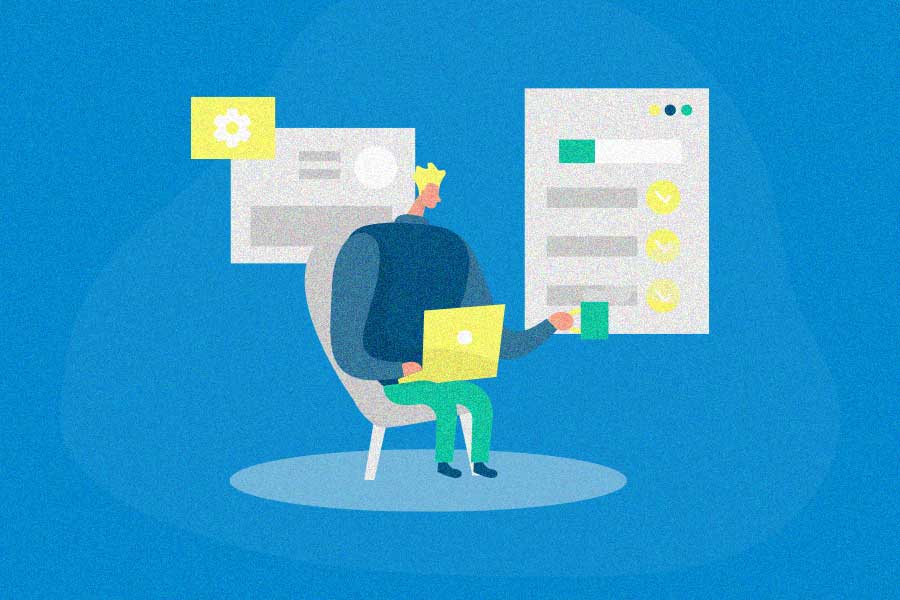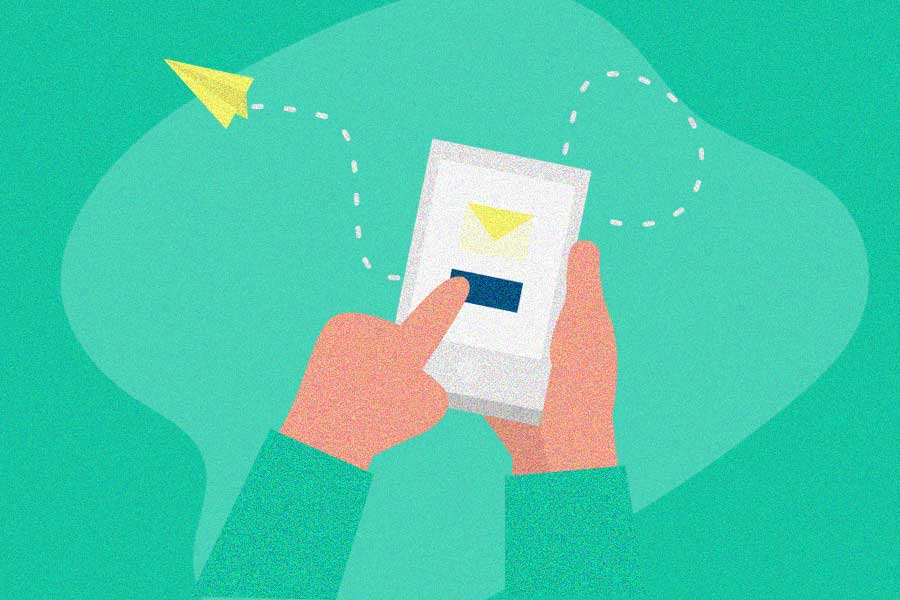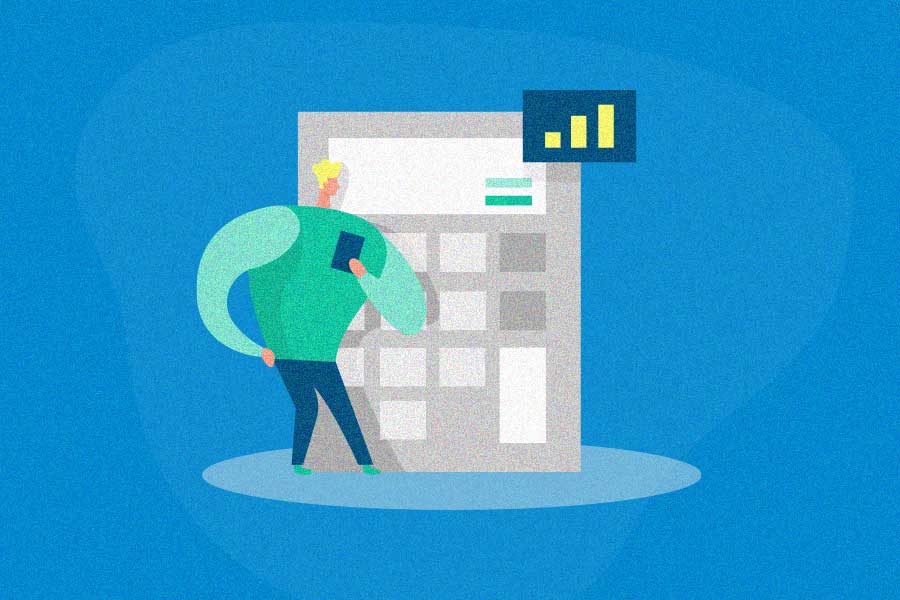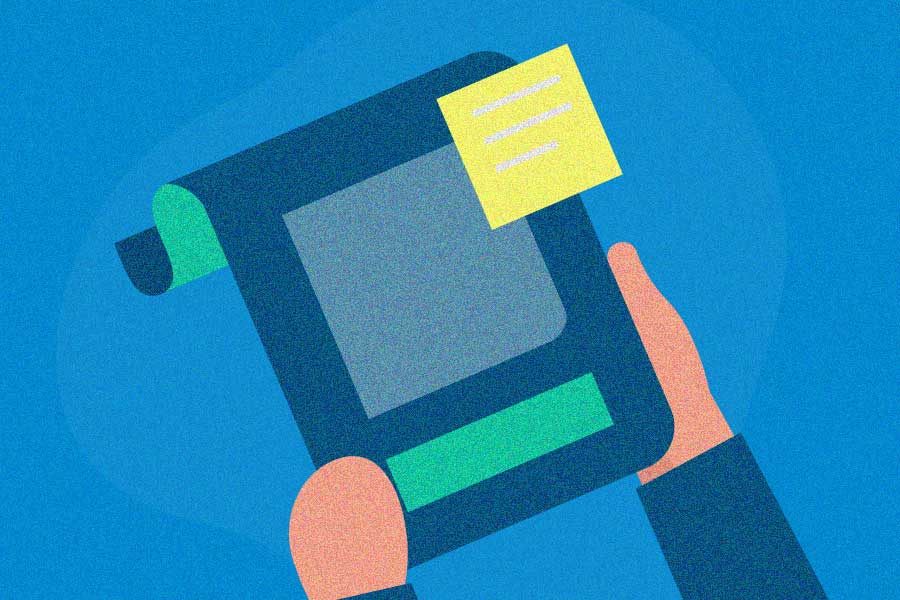Paid, owned, and earned media are the three channels a brand can use to gain exposure and engage with the public. But not everyone fully understands the differences between these channels.
For example, is social media an owned or earned channel? And which type of media provides the most mileage for your company and budget?
This article covers the key differences between each type of media, and the advantages and disadvantages of each type. We also share examples from companies that have used these channels to expand their market reach.
What is paid, owned, and earned media?
Paid, owned, and earned media are the different types of content and channels through which your brand can reach its audience. From social media sponsorships to YouTube ads, most of the marketing we see falls into one of these three types of media.
When it comes to paid media, owned media, and earned media examples, each type serves a specific function and requires a specific approach. Taking the time to learn how each media type fits into your overall marketing strategy can help your message reach your target audience in the best way possible.
The goal of paid, owned, and earned media
While paid, owned, and earned media are all different, their end goal is the same – to build brand awareness and generate more business.
In fact, the most successful marketers don’t just rely on one media channel. They draw from all three to create a comprehensive media strategy, and know how to maximize each type of media in their marketing strategy.
What’s the difference between paid, owned, and earned media?
To maximize each type of media, you have to first understand the difference between paid media, owned media, and earned media.
- Paid media is any type of content or marketing channel that requires payment (i.e., Youtube ads, podcast sponsorships). Usually, it’s aimed at increasing traffic.
- Owned media is any content that is published on channels that you create and control (i.e., your website, your newsletter).
- Earned media is any conversation or publicity around your brand that comes voluntarily from others (i.e., social media mentions from others, referrals, third-party reviews).
In the sections below, we break down each type of media, and explain its role in a brand’s overall marketing mix.
![Paid, Owned & Earned Media Examples [+ How To Use Each] 1 paid owned earned media chart (paid, owned, and earned media)](https://referralrock.com/blog/wp-content/uploads/2018/10/paidownedearned-1.png)
What are paid media channels?
Paid media is any type of content or marketing channel that involves a payment. Most of us are already familiar with this type of paid media – billboard ads, commercials, and PPC (pay per click).
Paid media is targeted to specific consumer segments, such as a certain demographic or even past customers.
Why pay for your media mentions? Paid media works really well if you’re just getting started and interested in building a customer base because it guarantees your content will go straight to your target market.
Paid media strategies are also good for retargeting or remarketing to those who have already shown interest in your business (i.e., past customers, past visitors to your site).
When leveraged together with other media types, paid media can be very effective in reaching people with high purchase intent.
Advantages and disadvantages of paid media
| Pros | Cons |
|
|
How much does paid media cost?
The cost of paid media depends on the channel and duration of your ad. For example, social media ads are relatively affordable, while a full-page print placement can cost a pretty penny.
The duration or frequency of the ad also factors into the cost. Will the ad run for a special holiday weekend or an entire month? A longer run time increases the number of people who see your ad, but it also raises the overall price.
Another cost to consider is the set up, which can oftentimes exceed the cost of the paid media placement. If you don’t have someone in-house to create your assets, you’ll have to factor in an additional contractor fee.
Other costs associated with paid media include content creation, design, production, website configuration, etc.
What is the return on investment (ROI) for paid media?
The ROI for paid media can vary wildly, depending on the type of channel, cost of goods sold, lifetime value of a customer, etc. The good thing is that most paid media channels include the ability to monitor and track key metrics, so you can measure exactly how much ROI you’re getting in relation to direct spend.
It’s good to know your budget and minimum required sales beforehand, so you can determine if the paid media channel is worth the cost.
How much time does paid media take?
Time to set up: If you’re creating an ad from scratch, the initial setup for paid media can take a significant amount of time. On the other hand, if you’re promoting or revising an existing piece of content, you’ll save a lot of time up front.
To get the most out of your paid media, you may also plan to develop landing pages where people will be directed after clicking the ad. Landing pages should be carefully designed to convert leads into customers, and can also take some time to develop.
Time to see results: Once a paid media ad has been created, however, it can generate traffic almost immediately. As soon as ads are up, people can see them. This makes paid media especially great for brands looking to gain instant visibility and initial customers.
Paid media examples and types
There are several subcategories under paid media, including both online and offline channels. Here are the main types of paid media, along with some examples of how they work within an overall media strategy:
Paid media example #1: Display ads
Display ads are one of the founding fathers of online paid media. Their initial popularity came mostly in the form of ubiquitous static banner ads that appeared on website sidebars.
But display ads have come a long way since then. Here are a few current display ad options:
- Pop-ups: A small ad that pops up as visitors browse a website (these can be triggered depending on time, clicks, exit intent, etc.)
- Wallpaper ads: A website background image that displays an ad on the entire page (WeTransfer is a popular one!)
- Video ads: A small video that automatically plays whenever a visitor scrolls past the section of the page
As far as paid media goes, display ads are usually very affordable. However, the pricing also depends on the site you want, the exact paid media placement (above the fold will be more expensive), and the average traffic the sit generates.
Display ads are great for remarketing or retargeting campaigns, as their visual aspect can easily catch the eye and remind potential customers of your brand or site. Likewise, Dynamic Search Ads are useful too.
Paid media example #2: Social media advertising
On social media platforms, most ads are designed to blend into the surroundings. Instagram, for example, uses native ads that appear in your feed. If you’re scrolling through, you may not even notice that some of the social media posts are actually sponsored ads.
Common types of native ads include in-feed, promoted posts or listings, and search result ads.
Social media ads have become increasingly popular with all companies – both online and offline – seeing benefits from this type of paid media. A major value of social media ads is they can be set up as pay-per-click, so you only pay when you get actual leads from the ad.
If you pay an influencer or ambassador to create social media posts promoting your brand, this also counts as paid media on social.
Paid media example #3: Search engine marketing (SEM)
Search engine ads are listings that appear at the top of search results. They’re a quick way to put your brand on top of the competition (literally), making this type of paid media one of the most popular forms of online advertisements.
SEM ads are typically pay-per-click (PPC) or cost-per-thousand impressions (CPM).
Paid media example #4: Video ads
Has video ever gone out of style? Between YouTube channels and other streaming platforms, you may have already seen your share of video ads.
Even a short paid video ad will seen. The most popular spots for video ads are right within streaming videos (not while browsing the site, but before or during an actual video).
Some high-traffic websites will also rent out video ad space, which is set to automatically play once a visitor lands on the page. For an idea of how much video ads can cost, here is an article that publishes how much it costs to advertise on YouTube.
Here’s an example of a video ad by Squarespace:
Paid media example #5: Radio or podcast ads
Though still a niche type of paid media, radio or podcast ads can still be effective. They are short, succinct, and played directly to a captive audience.
The trick is to get all your information in the tight time slot given. Radio ads can be as short as 15 or 30 seconds, so running the same ad multiple times a day can help increase its effectivity.
With podcasts specifically, you usually get an option for a pre-roll ad (played before the show starts) or the host may read the ad live. If you have a preference, be sure to do your research.
Of course, some brands will naturally do better with a radio or podcast ad. A good sign is to listen to the radio station or podcast you’re considering for a paid ad. If none of the businesses in your industry (or those who share the same target market) use this type of media, you may want to reconsider its value to your business.
Paid media example #6: Offline print ads
Print ads are one of the most traditional forms of paid media: newspaper ads, magazine ads, billboards, flyers, etc. Although it’s hard to measure the effectiveness of a print ad, they are still widely used.
Think of how many ads you see on the way to your favorite cafe or neighborhood shop. Not only do you see billboards or posters, you’ll may even see some flyers on the shop window too. In fact, you probably see print ads so often you’ve developed a sort of filter against them.
But with the right placement at the right time, offline paid ads can be a very effective part of your digital marketing strategy. You can even incorporate an online element or use something like a QR code generator to your offline ad to encourage people to visit your site or download your app.
Check out Delta’s interactive offline ad, which encourages the sharing of pictures taken with its travel backgrounds. People will remember Delta as they take their photos (and if Delta is lucky, someone might mention the brand when they post their photo, which is a form of earned media).
Paid media example #7: Word-of-mouth marketing
You may not think of word-of-mouth marketing as paid media. But in many cases, it is. Any word of mouth that happens through a customer referral program, employee referral program, influencer marketing program, or affiliate program comes with a cost.
Fortunately, that cost is only paid when you get a new customer. It’s basically whatever referral incentive you offer for the referral or word of mouth to happen.
In the example below, customers are encouraged to share “the magical world of Lime Crime” through their Facebook page. In exchange, Lime Crime pays out $5 for every successful referral.
What are owned media channels?
Owned media is everything that is published on channels you control. It includes your website or newsletter, as well as any social media accounts. (Even if you don’t own the actual platform, you do own your account and content.)
In most cases, owned media is the final destination – paid and earned media are the channels used to push traffic there. Thanks to the popularity of content marketing and social media, it’s become a lot easier to draw traffic to owned media channels.
But what happens once a visitor lands on your site? Owned media works best when it offers value for the visitor. It should draw customers to seek out your brand’s offerings, rather than pushing products and services onto them.
Advantages and disadvantages of owned media
| Pros | Cons |
|
|
How much does owned media cost?
If you’re looking for a simple site so you can start creating owned media as soon as possible, there are many great website platforms (i.e., WordPress.com or Wix.com) and social media accounts available for free.
In time, however, you might want to consider buying your owned channel. For example, you may want a more comprehensive website on your own server. The cost will depend on what domain and host you choose, and can run as low as $10 a year, or as high as hundreds or thousands of dollars for the domain and host.
Take account of the features you absolutely need and start checking for prices. You’ll find there are multiple things that can add up, especially when custom design and development are involved. Some of these prices include a domain name, web hosting, designer/developer fee, website themes, plugins, etc.
What’s the return on investment (ROI) for owned media?
Measuring the ROI for an ecommerce website is pretty straightforward – how many products have sold and how much profit are you making?
For other types of websites, it can be a little tricky. A platform like Google Analytics can help to see how much traffic your website is generating, or you can look at blog stats to see how your content marketing is adding to your total ROI.
How much time does owned media take?
Time to set up: Owned media takes time. Since every element is under your control, you’ll want to put some thought and effort into your owned media channels.
Of course, you may be able to set something up fairly quickly using a plug-and-play platform. But even then, you’re still looking at a few days of planning and preparation.
Plus, owned media doesn’t just run on its own. It requires constant care, in the form of fresh content and updates. Depending on your staff, you may be able to post a few original pieces per week, inclusive of writing and coming up with images.
Time to see results: It can take anywhere from a few weeks to a few months before the pages of your website can be crawled and ranked accurately. So if you’re keeping track of SEO metrics, you may want to give it a few weeks before checking any analytics.
Social media platforms, on the other hand, can attract likes in seconds. But it can still take time to build a strong following.
Owned media examples and types
The most common examples of owned media are websites. However, blogs, social media, and other platform channels are also types of owned media channels. Let’s go over a few popular owned media examples.
Owned media example#1: Your website
A company’s website is its introduction to the digital world. As compared to other owned media, a website is a long-term, versatile property your brand has total control over.
Though it usually takes the most time to scale, a website is great for carving out your own space in the industry and fostering customer relationships.
Owned media example #2: Content marketing
Content marketing is one of the best ways to give direct value to your audience, as well as establish your brand position in the market.
Blogs, for example, are a key content strategy that extends your brand. They allow you to share more about your company in a more conversational tone. Podcasts also fall under content marketing, and let your company talk about areas of expertise in conversation.
If you continue to add high-quality content regularly and share your content through other paid media channels, you can make the most of your content marketing efforts.
Owned media example #3: Social media marketing
Even though you don’t own the actual platforms (i.e., Facebook, Twitter, Instagram, TikTok, LinkedIn), your social media pages are considered owned media. You create and control all content that goes into each account.
A major benefit of social media channels is the opportunity to reach a large, targeted audience. Once you set up your account (which is free), you can already share your content in just a few clicks.
Owned media example #4: Email marketing
Similar to social media, email marketing is considered an owned media channel. Even if your company pays for an email marketing provider or service, it still owns the email list and email content.
Email marketing is one of the most versatile forms of owned media. It can be used in combination with other types of media (for example, to send blog posts or website updates) and is a way to deliver tailored content straight to engaged readers.
Owned media example #5: Word-of-mouth marketing
Word of mouth is one of the key benefits of using owned media channels. For example, you may have a new blog post, online campaign, or referral program.
By posting updates on your social media profiles, you’re sharing your owned media (the content or campaign) on another owned media (the social platform). If your audience likes what they see, that could create double the word-of-mouth marketing!
What are earned media channels?
Earned media is any mention or conversation around your brand that comes voluntarily from others. This type of media is something you can’t pay for or own. Instead, earned media is something you get organically (even if it’s the result of paid or owned media).
The most common types of earned media include non-paid news features, product features from bloggers, positive reviews, or social media mentions.
Advantages and disadvantages of earned media
| Pros | Cons |
|
|
How much does earned media cost?
While earned media is generally free, some of it may come at a cost. For example, many third-party review sites and platforms allow you to set up a free basic account. But they also offer extra features for a paid premium account.
However, while you may opt to pay for certain accounts, the actual recognition acknowledgement you receive on these platforms is what’s considered as earned media.
Some costs to consider when it comes to earned media include any platforms or software fees, the resources it takes to build a profile, and other costs for content creation.
What’s the return on investment (ROI) for earned media?
The biggest challenge of calculating ROI for earned media is measuring with 100% accuracy. First of all, it’s difficult to estimate how much effort is needed to actually generate word of mouth or earned media, whether that means reaching out to influencers or promoting marketing campaigns.
In addition, it’s nearly impossible to determine if an increase in traffic or sales comes solely from earned media.
But while the effects of earned media are general estimations, most companies feel it’s well worth it, as it builds authentic trust and loyalty for the brand.
How much time does earned media take?
Time to set up: Earned media is typically the result of other marketing efforts. For example, say someone shares your recent blog post or reposts your new campaign poster. The sharing is earned media, but the actual post requires you to design, create, and publish the content first.
Time to get results: Measuring the effects of earned media takes time, anywhere from a few weeks to a few months. Of course, you’ll be able to see social metrics, such as likes and shares, almost instantly.
But, tracking impressions, clicks, and other SEO driven data takes more time. It’s best to also promote your content constantly to build up engagement and encourage others to reference your site.
Earned media examples and types
Earned media is essentially word-of-mouth marketing, including any brand mentions, shares, or reviews outside of paid or owned channels. The following are some noted earned media examples.
Earned media example #1: Media publicity (public relations)
Many small or starting businesses don’t have a big marketing budget. Even with a strong social media presence, it’s not easy to reach the screens of potential customers in your target market.
So instead, some businesses focus on getting publicity from existing media outlets. If you have a product that stands out or offers something new, you may be able to get some free press coverage. After all, the media also loves a good story or new find.
To get yourself some media coverage, consider sending out a memorable press release. Share some of your back story or even include a sample or trial of your product – including something unique helps you stand out from the pile of other press releases.
If you have a bit more budget, you can also sponsor an event. Not only will your brand name will be in headlines, you’ll also be able to showcase your product or service to a select group of people.
Earned media example #2: SEO
Search engine optimization (SEO) is another form of earned media. Instead of spending money on a paid ad space, you’re aiming for organic traffic to your content.
For example, if you create content for specific keywords or search queries, you may start to see a rise in visitors, higher search rankings, or even score a featured snippet.
Naturally, SEO efforts may take time before you see results. Unlike paid media, SEO takes a more long-term, strategic focus. But when used in combination with paid or owned media, SEO is a great part of modern marketing strategies. Consider creating an SEO report to track progress over time.
Earned media example #3: Social media
Between brand mentions and reposts, it’s pretty obvious why social media is a great earned media channel. In fact, social media is where you’ll see most people discussing brands and sharing content. Make sure to engage with your followers and encourage them to post user-generated content (UGC), which you’ll repost or retweet so they can gain exposure too.
Social media works especially well when used in tandem with paid and owned media. For example, say you share a piece of owned media, such as a blog post, on one of your social media accounts.
Then, you decide to engage in paid media by boosting this social post across the platform, and attract attention to your blog. This leads to an increase in earned media and social shares.
Or, you might choose to repost a piece of UGC on your own brand social media account (with the creator’s permission, of course). This is a combination of earned and owned media.
If the UGC post is especially popular, you might even use different paid social ads to further promote the products featured in the UGC.
Here’s another example of combining all three types of media: You create a post on social media (your owned channel) inviting customers to share the post with friends in exchange for entrance into a giveaway (earned media). Then, you pay to promote the post as an ad on the platforms where you encourage the sharing (paid media).
The result? Using just one piece of social media content, you see the benefits of paid, owned, and earned media strategies at work on social media.
Earned media example #4: Third-party review sites
Most companies see reviews and testimonials as a great way to build credibility. They highlight any feedback or user-generated content from existing customers, and provide an opportunity for positive word of mouth to occur.
Build up a presence on third-party review sites in your niche by inviting your most satisfied customers to leave a review. For instance, if you’re a destination, focus on TripAdvisor, and if you have a brick-and-mortar, focus on Yelp. Or, if you’re a software site, build up your presence on sites like Capterra.
You can also collect reviews and social media comments from across the internet, and highlight them in a reviews/testimonials section of your website, like PeaTos does.
Earned media example #5: Other unpaid UGC
If someone mentions you in their blog, their video, or their website without being paid for the mention, this also counts as earned media. Finding, acknowledging and promoting these mentions is vital, just like with social media UGC. You might also reach out to the people who mentioned you and ask if they’d like to keep promoting you as ambassadors, in exchange for payment.
Earned media example #6: Word-of-mouth marketing
Yes, word-of-mouth marketing is also a type of earned media strategy – which makes it a paid, owned, and earned media powerhouse! Considering its many benefits, it’s a good idea to include this type of marketing in your company’s strategy.
Word-of-mouth marketing is one of the few channels that can be utilized in so many ways. Perhaps the biggest advantage is that word-of-mouth marketing can be commissioned (like a paid channel), created and controlled (like an owned channel,) and have viral growth (like an earned channel).
Paid, owned, and earned media: What’s right for your business?
Whether you’re working on paid, owned, or earned media channels, each type has its own place in an effective marketing strategy.
To sum things up:
- Use paid media to help drive traffic to the channels you own.
- Spend wisely based on where your audience is, and don’t forget to incentivize word of mouth with payments.
- Take the time to create owned media on channels you control, to build trust and authority
- Optimize these channels for SEO to help them get found.
- Creating highly shareable owned media elements, such as infographics, may help encourage earned media mentions.
- Encourage earned media, such as reviews, referrals, and user-generated content.
- Even though you can’t fully control it, people tend to trust the word of others most.
- Consider a referral program or ambassador program where you incentivize others for sharing your brand.
- In a single channel, these programs encourage word of mouth and bring the benefits of paid, owned, and earned media all at once.
Keep in mind that a single piece of content can run through one or a combination of channels. Now, we leave it to you to engage in the various paid, owned, and earned media channels, and decide which one brings the most benefits.
Ready to combine the benefits of paid, owned, and earned media through a customer referral program? Check out our referral program ultimate guide.
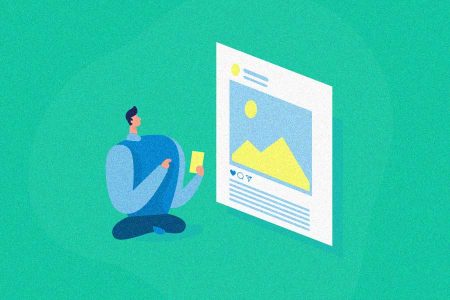
![Paid, Owned & Earned Media Examples [+ How To Use Each] 2 all-recipes-display-ads](https://referralrock.com/blog/wp-content/uploads/2018/09/all-recipes-display-ads.jpg)
![Paid, Owned & Earned Media Examples [+ How To Use Each] 3 wooden doctor kit paid ad](https://referralrock.com/blog/wp-content/uploads/2018/09/20210420_121849-498x1024.jpg)
![Paid, Owned & Earned Media Examples [+ How To Use Each] 4 paid influencer promotion](https://referralrock.com/blog/wp-content/uploads/2018/09/2019-08-02_15-53-30.png)
![Paid, Owned & Earned Media Examples [+ How To Use Each] 5 search-engine-marketing](https://referralrock.com/blog/wp-content/uploads/2018/09/search-engine-marketing.jpg)
![Paid, Owned & Earned Media Examples [+ How To Use Each] 6 paid owned earned video ad](https://referralrock.com/blog/wp-content/uploads/2018/09/Screen-Shot-2020-06-16-at-3.13.33-PM-1024x577.png)
![Paid, Owned & Earned Media Examples [+ How To Use Each] 7 ahrefs podcast ad](https://referralrock.com/blog/wp-content/uploads/2018/09/ahrefs-podcast-ad.png)
![Paid, Owned & Earned Media Examples [+ How To Use Each] 8 delta-ad](https://referralrock.com/blog/wp-content/uploads/2018/09/delta-ad.jpg)
![Paid, Owned & Earned Media Examples [+ How To Use Each] 9 lime-crime-word-of-mouth-marketing](https://referralrock.com/blog/wp-content/uploads/2018/09/lime-crime-word-of-mouth-marketing.jpg)
![Paid, Owned & Earned Media Examples [+ How To Use Each] 10 primary website](https://referralrock.com/blog/wp-content/uploads/2018/09/2021-04-20_12-40-31-888x1024.png)
![Paid, Owned & Earned Media Examples [+ How To Use Each] 11 referral-rock-social-media](https://referralrock.com/blog/wp-content/uploads/2018/09/referral-rock-social-media.jpg)
![Paid, Owned & Earned Media Examples [+ How To Use Each] 12 SEO-marketing](https://referralrock.com/blog/wp-content/uploads/2018/09/SEO-marketing.jpg)
![Paid, Owned & Earned Media Examples [+ How To Use Each] 13 milk-train-social-currency](https://referralrock.com/blog/wp-content/uploads/2018/05/milk-train-social-currency.jpg)
![Paid, Owned & Earned Media Examples [+ How To Use Each] 14 aerie real workout](https://referralrock.com/blog/wp-content/uploads/2018/09/2019-11-07_13-41-20.png)
![Paid, Owned & Earned Media Examples [+ How To Use Each] 15 paid post encourages social sharing: paid, owned, and earned media](https://referralrock.com/blog/wp-content/uploads/2018/09/20210420_121513-373x1024.jpg)
![Paid, Owned & Earned Media Examples [+ How To Use Each] 16 review-sites](https://referralrock.com/blog/wp-content/uploads/2018/09/review-sites.jpg)
![Paid, Owned & Earned Media Examples [+ How To Use Each] 17 peatos testimonials](https://referralrock.com/blog/wp-content/uploads/2018/09/2021-04-20_11-47-13-1024x449.png)
![Paid, Owned & Earned Media Examples [+ How To Use Each] 18 earned media example not sponsored blog](https://referralrock.com/blog/wp-content/uploads/2018/09/earned-media-example-not-sponsored-blog-1.png)
